Best 3D modeling software of 2025
Bring your creations to life with the best 3D modeling software for 3D printing and more
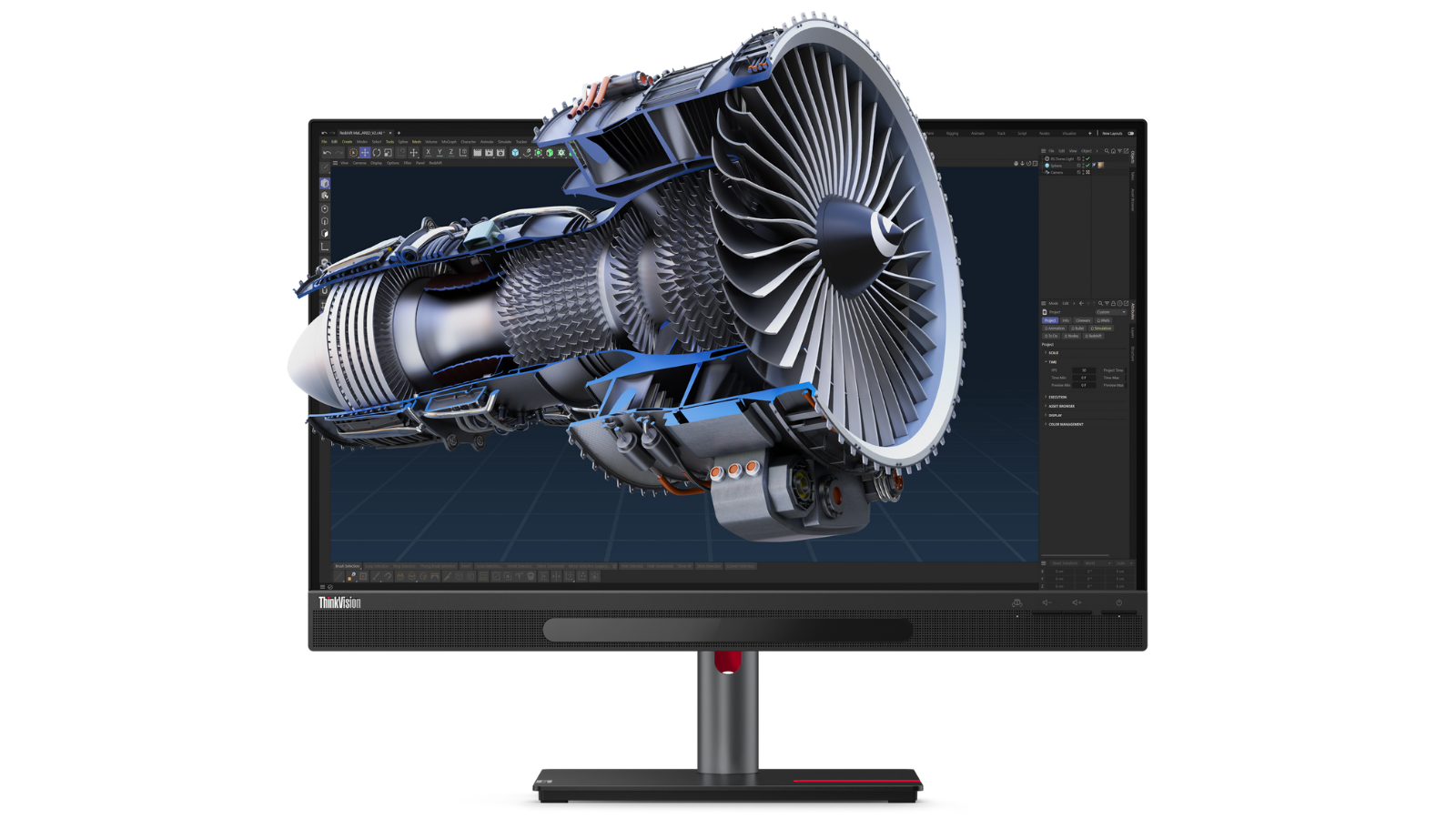
The best 3D modeling software and apps smoothly powers through a range of professional-grade design tasks, from architecture and video game design to 3D printing.
Depending on what you're creating, I find Autodesk 3ds Max to be the best 3D modeling software overall for professional film and game development, while Maya and Blender stand-out as top picks for animation (the latter is also completely free to use).
My team and I have tested a range of essential design tools where we compare performance, features, and workflows. These include the best VFX software, the best animation software, the best graphic design software.
Want to bring your creations into the real world? We've also reviewed the best 3D printers around.
Best 3D modeling software overall
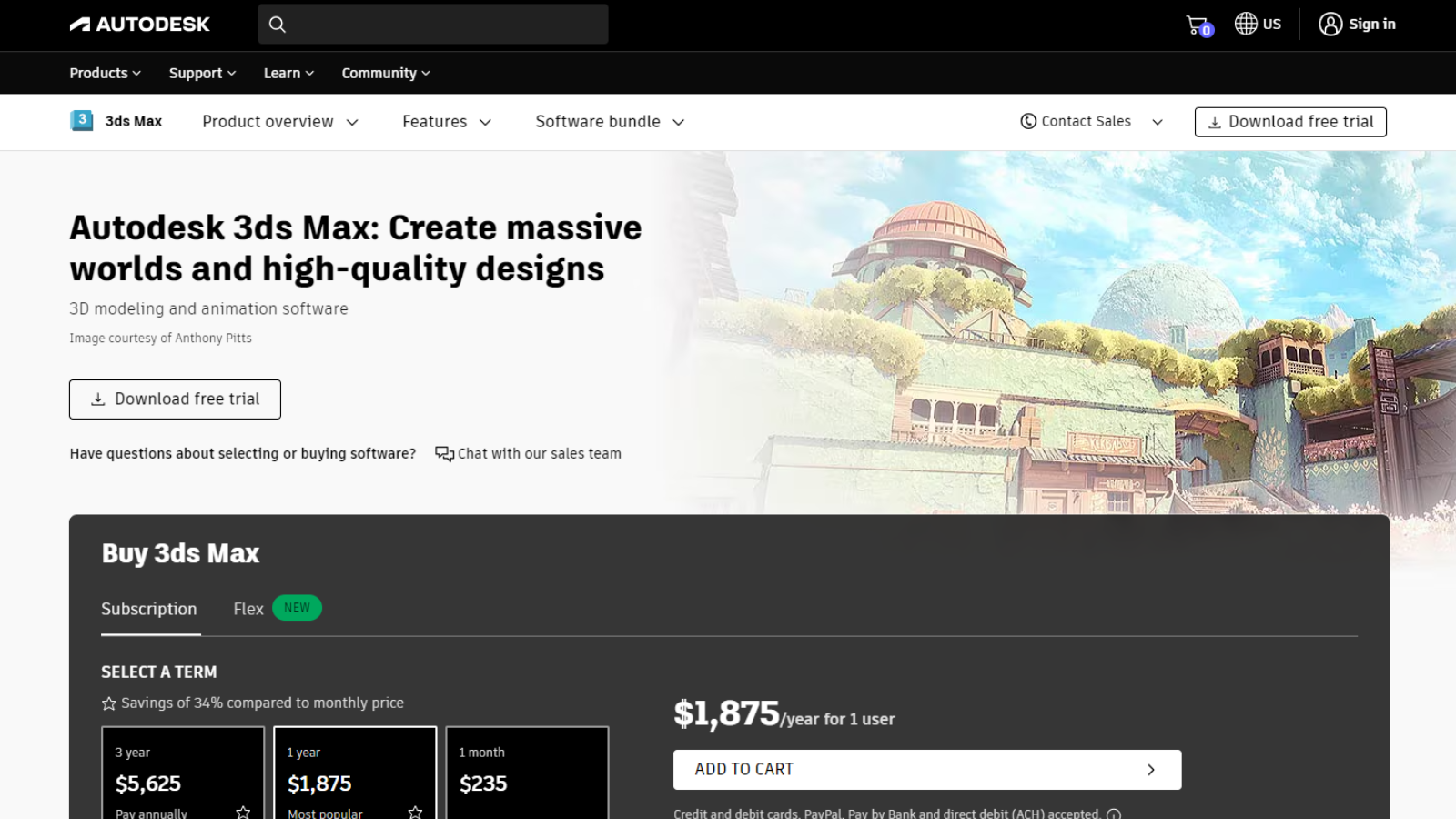
1. Autodesk 3ds Max
Our expert review:
Specifications
Reasons to buy
Reasons to avoid
Autodesk 3ds Max is our top pick for best 3D modeling software. And our emphasis here is on modeling, with 3DS Max especially popular with game developers, interior designers, and architects who need professional modeling, texturing, and meshing tools. For that reason, like Autodesk's Maya, Fusion360, and AutoCAD, it's good 3D printing software.
Standard features include skeletons and inverse kinematics, cloth simulation, skinning and character controls for bipedal motion. If the software doesn’t support the exact function or rendering mode you need, an extensive plugin system allows third-party modules to add this to 3DS Max. Some of these plugins are free, but we found the best ones are paid.
For modeling purposes, 3ds Max supports conventional polygon construction, NURBS and also patch surfaces. Images can be generated using a very wide range of rendering systems, including Renderman created by Pixar and mental ray.
However, while we think 3ds Max is a feature-rich 3D creation software, packed with pro-level functionality, it’s not the easiest program to use, and it's not totally versatile. It’s perfectly capable of animations, for example, but some professional animators and VFX artists may be better served by Maya.
We also ran into issues when using too many plugins, as they can interact in somewhat unpredictable ways. Complex plugins that stress the PC can make 3ds Max unstable on occasion. There’s also a potential barrier to entry: unlike Autodesk’s Maya, 3ds Max is still to this day puzzlingly Windows-only. Perpetual licences are a thing of the past for most professional software, and as such, 3ds Max is only available with a monthly, annual, or three-yearly subscription. You can also check out the software free for 30-days.
See what our sister site CreativeBloq thought in their review.
Best free 3D modeling software
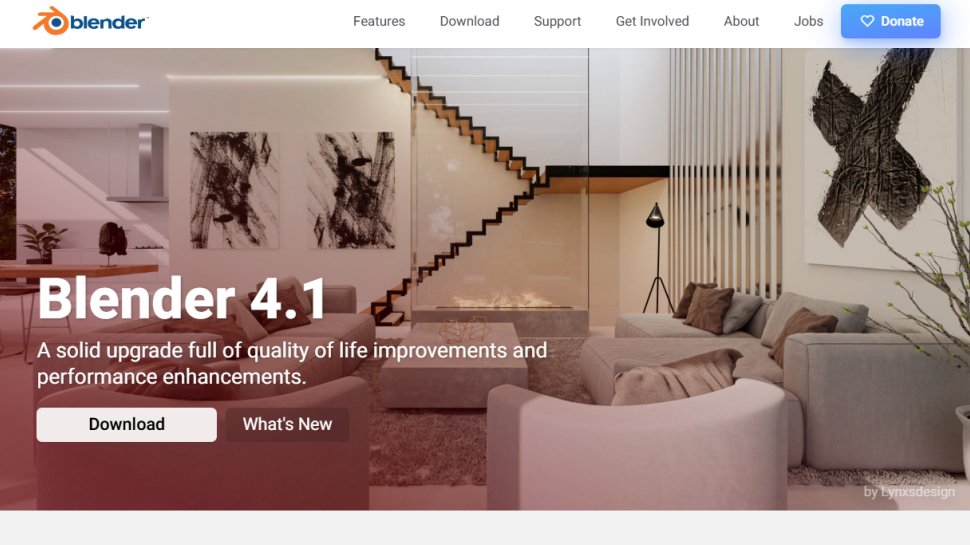
2. Blender
Our expert review:
Specifications
Reasons to buy
Reasons to avoid
Blender is an open-source 3D creation tool supported by a generous community of developers and users, and is free for personal and commercial use. For that reason, we view it as the best free 3D modelling software for animation and animators.
The top free 3D animator used to be the domain of hobbyists wanting to create animated space battles or giant robot films. Now, it’s evolved to the point where many production companies use it to create effects elements for big-budget movies.
Most other tools in our best 3D design software round-up focus on the modeling or rendering parts of the 3D process. Blender is different, providing the entire pipeline from modeling, rigging, animation, simulation, rendering, compositing and motion tracking to video editing.
It even has a 2D animation pipeline, if you need to combine 2D elements with 3D models. The pipelining aspect of this tool is perfect for team collaboration, where artists can work on their part of a scene, and then watch it come together with elements created by others.
As this is open source software, a large developer community works to extend its functionality over time. However, Blender’s independence from big companies, and its reliance on community support does mean it won’t always have regular updates and timely bug fixes. Despite this, development continues apace to keep Blender the best software for modelling, 3D printing, and much, much more.
One feature is real-time rendering using the EEVEE engine, bridging the gap between what was previously possible in real-time and those effects that required exclusively offline processing. It may not be the easiest 3D modeling software to use, but as a free program for Windows, Mac, and Linux, it's a good place to start if you're new to the scene. We also thought Blender was the best Adobe After Effects alternatives for animation and VFX.
Our sister site CreativeBloq were highly impressed in their review.
Best 3D modeling software for animators
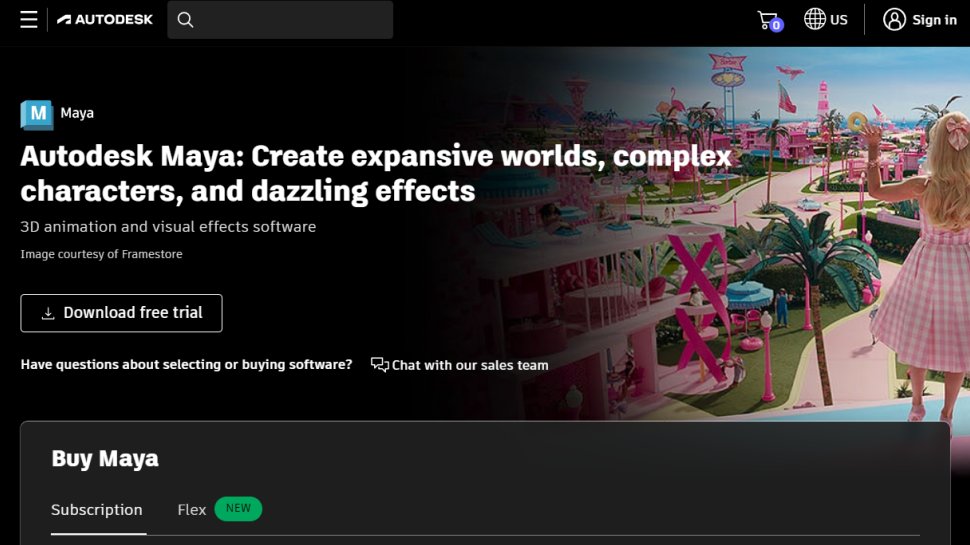
3. Autodesk Maya
Our expert review:
Specifications
Reasons to buy
Reasons to avoid
If you're into animation, Autodesk Maya is easily the best 3D graphics software - it was actually one of the first commercial 3D rendering systems to introduce hair and fur.
An industry-standard that’s used in countless big-budget productions, like Stranger Things, the program is rich with pro-level features for modeling, texturing, rendering, and more. You'll find tools for character creation and movement, and the simulation of natural elements such as water, fire, sandstorms and explosions. For that reason, it’s often the software of choice for VFX artists and animators.
Maya now includes Bifrost procedural effects, enabling complex elements to be constructed using dynamic solvers. Once a scene has been created and effects defined, photoreal rendering is available using the Arnold RenderView system for stunningly real results.
However, that means Maya is a hugely advanced tool. And its interface is far less user-friendly than 3ds Max. So, this isn’t easy 3D modeling software for beginners, but for professionals who demand Hollywood-grade crafting.
Overall, we found Maya to be the software equivalent of the magician's hat from which almost anything can be pulled. Like Blender (and unlike 3ds Max), it's available across Windows, Mac, and Linux. There are three subscription options available, for monthly, annual, or tri-annual payments, as well as a 30-day free trial.
See what our sister site CreativeBloq thought in their review
Best 3D software for 3D printing
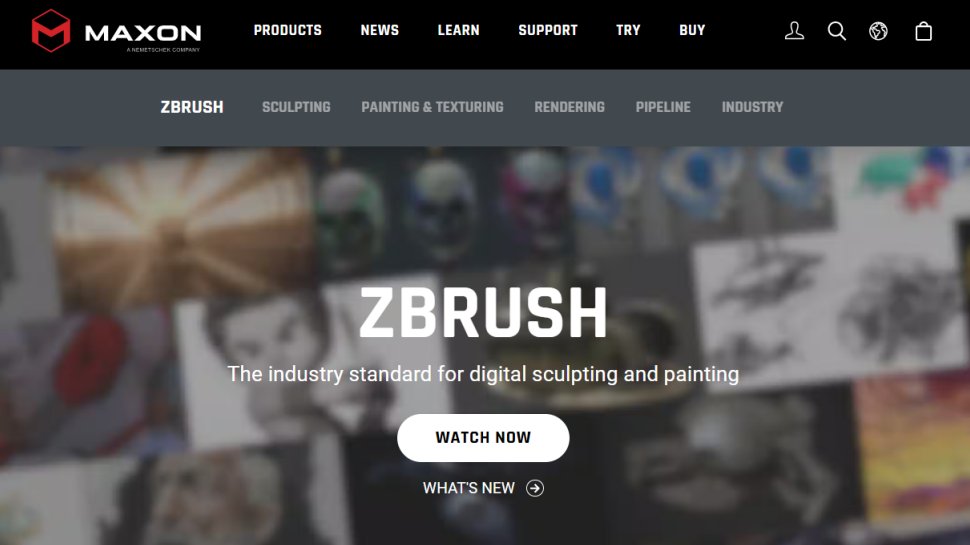
4. ZBrush
Our expert review:
Specifications
Reasons to buy
Reasons to avoid
ZBrush is a creative take on modeling in 3D. Like Adobe Substance 3D Modeler, it uses a brush system to enable designers and artists to sculpt digital clay in real-time. Because of this 'virtual claymation' approach, ZBrush proved to be one of the best 3D software for 3D printing.
If you're all about design, the program is a natural choice. Objects created in ZBrush tend to have a hand-formed feel. The object construction system lends itself to creating new and interesting shapes, as much as painstakingly recreating existing objects in a 3D space. It also means you can really focus on detailed sculpting, which should come out looking great - it is, after all, some of the best 3D printing software around. Despite an initially complex and unconventional modeling and sculpting method, this arrangement does make it easier for beginners to join the fun.
The system can be used with pressure-sensitive pens and graphics tablets to help with the organic nature of a modeling method popular with concept artists, filmmakers, and game developers.
We found another artist-friendly feature is a non-linear production path. This lets you revert a design to a previous iteration, make a change, then roll forward again. This flexibility allows for mistakes, changes of mind, or design evolution to be part of the process. The modelling and 3D printing software is available via a subscription for Mac and PC, and you also have a 14-day free trial on offer.
See what our sister site CreativeBloq thought in their review
Best 3D modeling software for architects
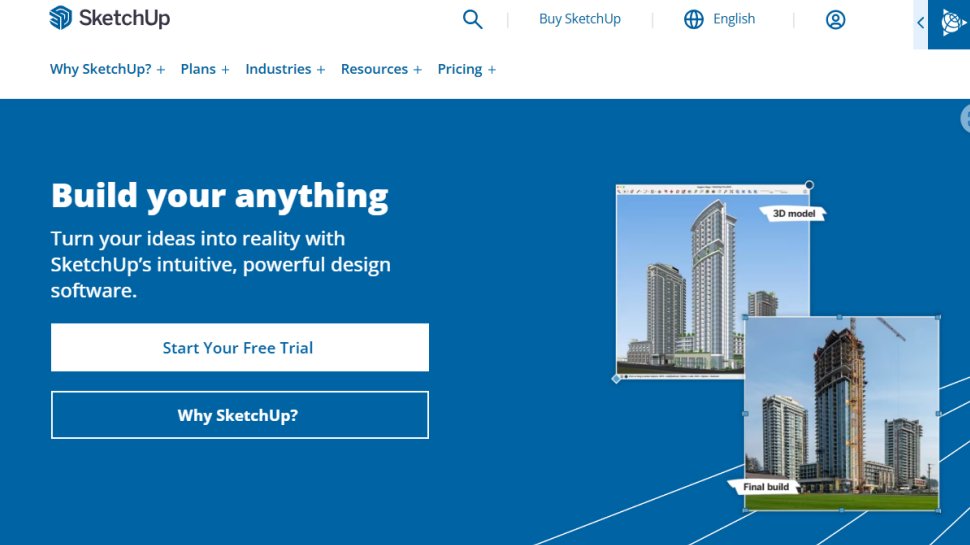
Specifications
Reasons to buy
Reasons to avoid
While we noted that it’s not really built for interior or landscape design purposes, we praised the tool for offering “ absolute complete freedom, with the ability to create anything from a high rise building right down to a stool.” The tool attracts a large, dedicated community following - with vast user-generated object libraries, and pre-constructed elements to use in your own designs.
You’ll find four versions of the 3D design app, each offering a better toolset for more professional uses: SketchUp Free lets home users learn to craft 3D objects right in their browser. The SketchUp Go subscription is for 3D modelling on iPad and the web. SketchUp Pro offers more tools, finally including desktop support in addition to its iPad and browser capabilities. Finally, SketchUp Studio, the most advanced package (which sadly lack MacOS support and is Windows-only), emphasises photorealistic models and animation. A 7-day free trial is available.
After following a handful of straightforward tutorials, artists of any skill level can begin crafting complex solid geometric shapes. At SketchUp’s lower end, we found the free version was best for rapidly prototyping concepts, while the more feature-rich ones will let you visualise entire buildings.
Read our full SketchUp review
Best 3D modeling software for surfaces

6. Rhino
Specifications
Reasons to buy
Reasons to avoid
If you're working with surfaces, Rhino has to be the top choice. When the tool first appeared, even the best 3D modeling software could only handle basic geometry and a few offered splines. Almost none of them could handle NURBS. That’s essential when you’re accurately modeling, for instance, the body of a vehicle or aircraft, or the curvature of someone's face.
Available for both the Mac and PC, Rhino is an especially versatile program. It's capable of sculpting objects, adapting LIDAR scans, working with meshes from other systems. It can even render scenes using raytracing. Like 3ds Max, this also has a plugin solution and a sophisticated developer platform for those wanting to create new ones.
Alongside the plugins is a scripting language, enabling complex detailing or modification processes to be automated. But even if you’re not a software developer you can create enhanced functionality through Grasshopper, a tool for making form generation algorithms without writing code.
Overall, Rhino excels at prototyping mechanical parts or using the software for 3D printing concept designs. Our only reservations about it are that for someone coming from a more conventional modeling environment this learning curve can be a steep one, and we find the interface to be a bit clunky compared to others.
Unlike all other options on this list (aside from Blender which is free), Rhino doesn’t attempt to take money from you each month for using their software. Instead, they offer you a perpetual licence; a rare thing these days that we encourage. In addition to that, they also have an extremely generous 90-day free trial. You can still use the software after that time, only you won’t be able to save your work and any plugins you have installed will stop working until you purchase a license.
Best 3D modeling software: FAQs
What is 3D modeling?
We asked Penny Holton Craig, Principal Lecturer Principal Lecturer in the Department of Digital Arts and Animation at Teeside University, for her definition of 3D modelling:
"3D modeling is a vital part of the computer graphics process. It is the creation of objects in 3D space. In some organizations, it's used as a 3D mock-up software to gauge the MVP or test out ideas.
There are now a number of ways to create 3D models and the techniques can be split broadly into two areas. Hard surface modeling where you use 3D polygon shapes and vertices to form an object, and digital sculpting where you work with virtual clay.
Hard surface is good for modeling things like buildings and cars, where digital sculpting is better for organic structures such as characters and animals.
3D models can be created for a variety of applications from product design, engineering, and architecture to movies, games, and commercial advertising."
What sort of computer do I need to run 3D modeling software and rendering software?
Although system requirements vary, 3D design software is generally very resource-intensive - so you'll need a computer with good specs to run the program smoothly. The best laptops for architects, for example, are performance-driven, with fast CPUs, lots of RAM, and a strong GPU for visual fidelity,
Our team has actually tested out the best laptops for Blender. If you just want to have a go, then you should be able to get the program working on a slightly above average PC (or laptop), such as an Intel Core i5 with a decent graphics card and at least 8GB of RAM.
As soon as you start to want to create and render detailed computer-generated imagery and visual effects, you will need a more powerful machine. Generally, the best laptops for video editing or the best video editing PCs should be able to easily handle most 3D modeling software.
How to choose the best 3D modeling software
Why you can trust TechRadar
When choosing which software is best for 3D modeling, consider your use and needs, your skill level, your budget, and what fits your creative workflow.
Your use
Like the canvas vs the cel, artists and animators need different spaces to create, so factor in how you’ll use the software. The best 3D design software and tools are powerful at everything from modeling and sculpting to motion graphics. Some excel in particular areas or are more suited to specific industries, like the best architecture software. Some make good 3D printing software, while others are better for 3D drawing and sketching.
Your skill level
Take your skill-level into account. Some 3D software can be advanced or overwhelming to beginners, so if you’re new to CG graphics and visualizations, start with a tool with a gentler learning curve.
Your budget
Budget will be a factor - especially for creatives who demand that professional polish. Top-end software, like Autodesk 3DS Max and Maya, deliver industry-standard results at industry-standard prices. If your needs (or your budget) are less extensive, for example, building a quick mock-up or visualization, tools like Blender and SketchUp Free offer affordable alternatives.
Your hardware
The best 3D modeling software can be pretty resource-intensive, demanding a lot from your computer. You'll need to make sure your hardware can manage heavy workloads. Popular choices in hardware for heavy workloads include the best laptop for engineering students, best mobile workstations, and best workstations, but it's about finding the right balance.
Your creativity
Be subjective. Choose the software that feels comfortable for you, and matches your flow.
How we test the best 3D modeling software
Our team of expert reviewers have benchmarked hundreds of creative apps, from the best digital art and drawing software to the best video editing software. We take the same rigorous approach, whether we're reviewing photo editors or 3D printing software.
When we test which 3D modeling software is best, we’re looking for outstanding examples of what matters to users.
We expect to see good 3D software exhibit a strong user experience and an interface that’s intuitive and navigable. We're not just looking for the easiest program for 3D modeling. Even more advanced or complex 3D programs, like Rhino and 3ds Max, still needs to be accessible, despite steeper learning curves.
We test the performance of each tool, ensuring an optimal creation process and a finished product that’s of high quality. Since every 3D modeling software is different, we also evaluate how well the program meets the needs of its intended user-base with its appropriately equipped toolkit.
When a service is promoted as free, it needs to be genuinely free. No hidden charges, secret subscriptions, or credit card details. Any limitations to free versions, or upgrade costs, must be clearly signposted for the user.
During our test and review of the best 3D modeling software, after signing up to each service, we used a handful of files to see how the software could be used for the editing and development of 3D objects and characters. The aim was to push each software platform to see whether it could simply and easily not just edit a range of content types but also do so faithfully and consistently without recurring errors.
Get in touch
- Want to find out about commercial or marketing opportunities? Click here
- Out of date info, errors, complaints or broken links? Give us a nudge
- Got a suggestion for a product or service provider? Message us directly
Are you a pro? Subscribe to our newsletter
Sign up to the TechRadar Pro newsletter to get all the top news, opinion, features and guidance your business needs to succeed!
Mark is an expert on 3D printers, drones and phones. He also covers storage, including SSDs, NAS drives and portable hard drives. He started writing in 1986 and has contributed to MicroMart, PC Format, 3D World, among others.
- Steve ClarkB2B Editor - Creative & Hardware
- John LoefflerComponents Editor
